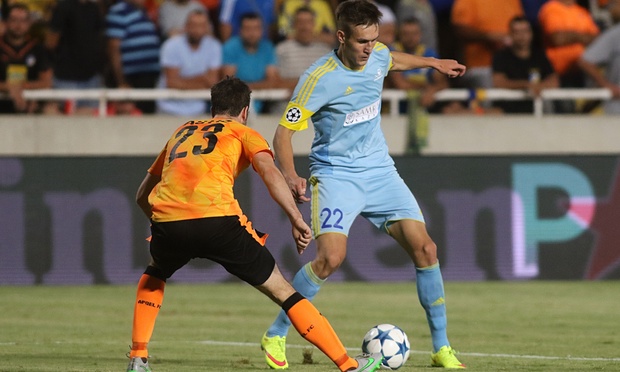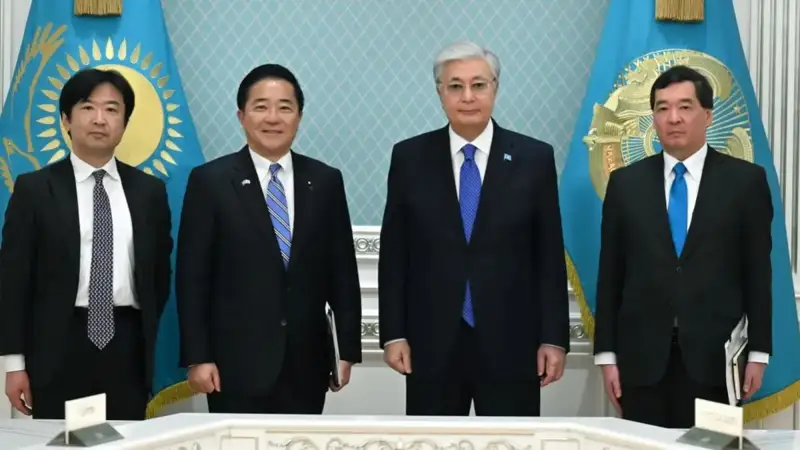 While the Kazakhstan national side languishes 145th in the world, the country’s leading club will become the first Kazakh side to play a Champions League group match, against Benfica on Tuesday
While the Kazakhstan national side languishes 145th in the world, the country’s leading club will become the first Kazakh side to play a Champions League group match, against Benfica on Tuesday
On Wednesday, the players of FC Astana will board a plane in Lisbon and fly east for 3830 miles to get home. To put that in context, that’s 400 miles further than flying from London to New York. If they drove (non-stop), the journey would take them 77 hours and take them through nine countries and five time zones. It is, in short, a long way. But those players will make the journey having made history, as the first Kazakh side to play in the group stage of the Champions League.
That’s still far from vindicating the decision the Kazakh federation (KSF) made in 2002 to apply to join Uefa, but it is, perhaps, a start. Although in July 2002 Zhenis Astana took the lead after eight minutes away to the Moldovan side Sheriff in the first European tie contested by a Kazakh club, progress has been slow. Tobol Kostanay won one of the three Intertoto Cups in 2007, but it wasn’t until 2013-14 that Shakhter Karagandy became the first Kazakh club to reach the group stage of the Europa League. As Celtic fans will remember, they were very close to the group stage of the Champions League that season, winning the home leg of their play-off 2-0, only to go down 3-0 at Parkhead.
Astana’s progress hasn’t come from nowhere. In 2013-14 Aktobe got to the play-off round of the Europa League. Last season, Aktobe entered at that point (and lost) while Astana won through three qualifying rounds to get there and Shakhter fell one round short. That might not sound like much, but given where Kazakhs were coming from, it was meaningful progress. It’s significant too that the charge is led by three teams – perhaps now including Kairat Almaty, beaten in the play-off round of the Europa League this season, rather than Shakhter who have slipped to second bottom in the table. Although Astana are owned and funded by the state, this isn’t about one side with greater resources than the rest but about a general improvement in Kazakh standards.
Whether that is enough to justify the move into Uefa is another matter. In that time, the national team has slipped from 117th to 145th in the world and is further away from qualifying for a World Cup than it ever was in the Asian Football Confederation. They lie bottom of their group in qualifying for Euro 2016 with two points and five goals from eight games – although earlier this month they did become the first side to avoid defeat away to Iceland in this qualifying series.
“Our experts are deeply convinced that our football today needs to be part of Uefa, which in our opinion has the most developed and progressive system of football in the world,” a KSF statement said when making its application. The then-president of the KSF, Rakhat Aliyev, believed that Kazakhstan would develop more quickly playing tougher opposition and recognised that playing the likes of Ukraine, Turkey, Denmark and Greece – teams they played in qualifying for the 2006 World Cup – would generate far more interest than games against Iraq, Nepal and Macau, their opponents in the 2002 qualification. And while the distances to travel to games were vast, they were still generally shorter than in the AFC.
Is Kazakhstan in Europe or Asia? Well, it’s in both. It’s huge, the ninth largest country in the world. If the Ural River is taken as the divide between Europa and Asia, there is a small chunk of Kazakhstan to the west. But the suspicion is that decision was based more on the government’s foreign policy than on issues of football or geography. An estimated 3.2% of the world’s oil reserves are in Kazakhstan and oil makes up around a quarter of the Kazakh GDP. Nursultan Nazarbayev, who has been president since 1989 has tried to maintain good relations with the USA, Russia and China and being part of Uefa is part of a more general policy of looking west rather than east. Like the Astana cycling team, which is also run by Kazakhstan’s sovereign wealth fund, Samuryq-Qazyna, Astana the football team is about promoting the image of Kazakhstan.
From that point of view, Astana’s qualification for the group stage is of symbolic value, even if they end up making little impression. And in truth, every point will be a bonus. Although Astana provided six of Kazakhstan’s 25-man squad for the recent internationals and, although they have in the Bulgarian Stanimir Stoilov a coach who led Levski Sofia to the quarter-final of the Uefa Cup in 2006-07, this is a side lacking experience in the sort of challenges it will meet against Benfica, Atlético Madrid and Galatasaray. Stoilov has a reputation as a coach who prefers a possession-based style of play, and he stuck with a 4-4-2 through both legs against Maribor of Slovenia and HJK of Finland, switching to 4-2-3-1 only for the away leg against APOEL as Astana protected a 1-0 first-leg advantage by drawing 1-1.
The team itself is an eclectic mix of Kazakhs, players from the former Yugoslavia, the Colombian central midfielder Roger Cañas and the Central African forward Foxi Kéthévoama. They at least are not burdened – yet – by the problem that has for years afflicted the likes of Dinamo Zagreb, who dominate their domestic league so easily that they forget how to do anything other than attack. Astana lie second in the Kazakh league, a point behind Kairat, having played a game fewer – part of the benefit that the development is not concentrated on one club. Nor should that change even with Champions League revenues – which have, for instance undermined meaningful competition in Cyprus where APOEL are now perennial winners thanks to the money they made reaching the quarter-final in 2012; Samuryq-Qazyna is worth an estimated £66bn. If it wanted to blow the competition away with major signings it could already have done so.
Maybe it will end up doing that, but for now the model has been restrained growth, all in the hope that Astana can make Kazakhstan seem not quite so far away.
The Guardian, 15.09.2015




